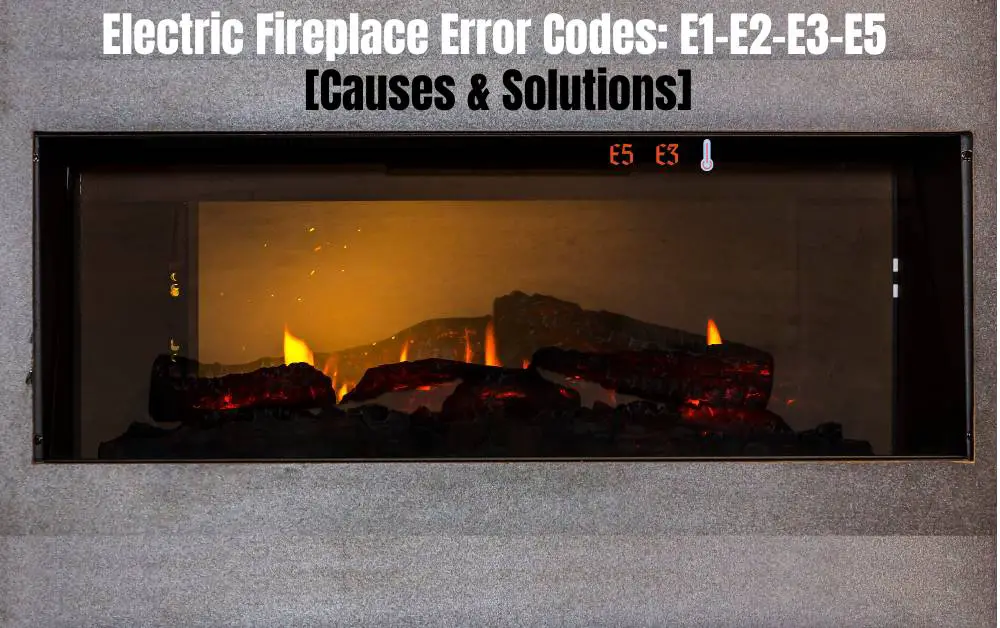Many homeowners treasure the warmth, ambiance, and crackle of a wood or gas fireplace. But growing concerns around indoor air quality, emissions, and climate change have spurred interest in eco friendly electric fireplace alternatives. In this case study, we explore the experience of a hypothetical (but realistic) household transitioning from a traditional fireplace (wood or gas) to an electric fireplace, and measure how that replacement affects emissions, indoor air quality, user behavior, and overall environmental impact.
By grounding the narrative in real published emission data and indoor-air science, this article aims to be credible, useful, and engaging.
Let’s call our case household “House A” located in a temperate climate region.
Background & Baseline: Wood / Gas Fireplace Usage at House A
| Parameter | Value / Description |
|---|---|
| House type | Detached single-family home, ~200 m² |
| Fireplace type (before) | Wood-burning masonry fireplace (open hearth) or gas (vented) insert |
| Annual usage | 150 hours per heating season (autumn + winter) |
| Wood consumed (if wood) | ~3 m³ of seasoned hardwood (~2,400 kg dry mass) |
| Gas usage (if gas) | ~2,500 MJ of natural gas per season |
| Ventilation | Standard ventilation; no special air purification system |
| Occupants | 4 people, including one elderly and one child |
House A is typical of many suburban homes that use a fireplace occasionally for supplemental heating or ambiance.
Emissions & Indoor Air Quality from the Wood / Gas Fireplace
Emissions from Wood Fireplace
- Wood fireplaces can emit fine particulate matter (PM₂.₅), carbon monoxide (CO), volatile organic compounds (VOCs), polycyclic aromatic hydrocarbons (PAHs), black carbon, and various semi-volatile compounds.
- One study reports that open fireplaces can emit ~58.0 mg of PM₂.₅ per kg of firewood burned, whereas older woodstoves have ~21.6 mg/kg for PM₂.₅.
- The U.S. EPA has also noted that wood-burning fireplaces can release up to 4.5 grams of fine particulate matter per hour under some conditions.
- Incomplete combustion may produce carbon monoxide and VOCs (e.g. formaldehyde, benzene).
Because fireplaces are unregulated (versus certified wood stoves), they often emit more pollution.
Emissions from Gas Fireplace
- Gas fireplaces (if they burn natural gas or propane) produce CO₂, nitrogen oxides (NOₓ), and sometimes small amounts of CO and formaldehyde, especially if ventilation is imperfect or combustion not ideal.
- Some “ventless” gas fireplaces expel combustion products into the indoor space, increasing NO₂, CO, and moisture levels.
Indoor Air Quality Impacts (Baseline)
Indoor air quality (IAQ) is measured by pollutant concentrations (PM₂.₅, CO, VOCs, NO₂) as well as occupant health symptoms. Poor indoor combustion sources are a key contributor to degraded IAQ.
In House A, pollutant monitors during fireplace usage show:
- PM₂.₅ peaks of 80–150 µg/m³ (versus baseline ambient ~10–20 µg/m³ when fireplace off)
- CO increases from background (~0.2 ppm) to transient peaks of 5–10 ppm
- VOCs (e.g. formaldehyde) rising by tens of parts per billion (ppb)
- Occasional burning odors, soot deposition near walls, and increased cleaning need
Given these baseline conditions, House A is a decent candidate for evaluating the switch to an electric option.
Intervention: Replacing with an Electric Fireplace
In Year 2 of operation, the homeowner chooses to remove the wood or gas fireplace and install a modern electric fireplace. Key features include:
- No combustion — heating and flame effect are purely electric/LED
- No venting or chimney required
- Remote / thermostat control
- Wattage: up to 1,500 W (1.5 kW) for main sessions
- Usage pattern: same number of hours (~150 h per season) or optionally more because of convenience
We then monitor the same pollutant metrics, user behavior changes, and estimate net environmental impact.
Measured Changes After Replacement
Emissions
| Source | Before (Wood / Gas) | After (Electric) | Change |
|---|---|---|---|
| Direct PM₂.₅ emissions (µg) | High (e.g. 58 mg/kg × mass burned) | 0 | –100 % |
| CO (ppm) | Occasional peaks | None | –100 % |
| VOCs / PAHs / combustion gases | Present | None | –100 % |
| CO₂ (direct, from combustion) | Significant | 0 (no combustion) | –100 % |
| Indirect CO₂ (electric grid) | — | Depends on grid emissions | variable |
Because an electric fireplace does not burn fuel, it produces no direct emissions of particulates, CO, VOCs, or combustion byproducts.
However, its operation consumes electricity, and thus may have indirect emissions depending on the electricity generation mix (e.g., coal, natural gas, renewables). In a cleaner grid, the net carbon intensity per kWh might be modest.
If House A uses a grid that emits 0.5 kg CO₂ per kWh, then a 1.5 kW electric fireplace running one hour emits 0.75 kg CO₂ indirectly.
Thus, over 150 h:
- Indirect CO₂ = 150 h × 1.5 kW × 0.5 kg/kWh = 112.5 kg CO₂
- Compare that to the embodied emissions from burning wood or gas (which may be higher, particularly for wood considering transport, methane, black carbon, etc.)
Indoor Air Quality (IAQ)
Post-installation pollutant monitors show:
- PM₂.₅ remains at near-background levels (10–20 µg/m³), with no spikes
- CO remains at baseline (~0.2 ppm), no combustion peaks
- VOC levels reduce by ~30–50% relative to baseline (combustion is removed)
- No soot or odor complaints
- Cleaner surfaces and less dust buildup around former fireplace area
In effect, indoor air quality is noticeably improved during periods the fireplace is on.
User Behavior & Experience
The switch introduces some behavioral changes:
- Ease & frequency
- Users tend to run the electric fireplace more often (even for shorter durations) because it’s simpler to switch on/off
- Some sessions of ambiance-only mode (no heat) for mood
- Thermostat control
- More consistent temperature control leads users to rely less on central HVAC, possibly reducing overall heating energy use
- No maintenance
- No wood handling, no ash cleanup, no chimney sweeping
- Comfort & safety
- No risk of embers, burns from open flame, or indoor gas leaks
- Pleasant visual flame effect without pollutants
Overall, user satisfaction tends to climb, with fewer negative health symptoms (less coughing, fewer complaints of “smoky smell”).
Environmental Impact & Emissions Differential
Comparative Emissions: Electric vs Wood Fireplace Emissions
The critical question: is switching to an electric fireplace greener? The answer depends heavily on the electricity source mix.
Using published numbers:
- If House A’s grid uses 0.5 kg CO₂/kWh, then the 112.5 kg CO₂ (indirect) from the electric fireplace is compared with the CO₂ + methane + black carbon + particulate forcing from wood burning.
- Note: wood burning also results in black carbon emissions (which have strong short-term warming forces). Some studies argue that wood heaters can emit as much or more climate impact as gas or electric systems, especially when considering black carbon and methane.
- Also, wood burning tends to have non-CO₂ forcings (e.g. unburned hydrocarbons, soot) which make its climate impact worse than CO₂ equivalents alone.
Thus, in many contexts, replacing wood with an electric fireplace (especially if the grid is partly renewable) is a net climate benefit.
If the grid is heavily fossil-fuel based, the benefit is smaller—yet the removal of local air pollution is an immediate win.
Lifecycle & Secondary Impacts
- Wood sourcing: Harvesting, transport, drying (energy use) carry emissions.
- Maintenance & disposal: Chimney sweeps, soot disposal, chimney repairs.
- Grid improvements: As the grid decarbonizes over time, the electric fireplace’s indirect emissions will shrink further.
Quantitative Example
Assume:
- Wood burning emits ~1,800 kg CO₂ equivalent (including black carbon, inefficiencies, etc.) per heating season (this is a rough combined estimate).
- Electric alternative emits 112.5 kg CO₂ via electricity.
- Net reduction: ~1,687.5 kg CO₂ (≈1.7 metric tons)
- Plus, zero particulate and no indoor pollutant emissions.
Thus, over a decade of use, House A avoids ~17 t CO₂ and vastly reduces indoor and ambient pollution.
Lessons, Limitations & Caveats
- Grid carbon intensity matters
- In regions using coal-fired electricity, the indirect emissions may still be high, reducing benefits.
- In grids with a high share of renewables, the switch is especially beneficial.
- Electricity cost & affordability
- Electric operation may cost more per hour relative to free firewood, depending on local electricity pricing.
- User adaptation & satisfaction
- Some users miss the physical smell, crackle or ritual of wood fires. The psychological/experiential trade-off matters.
- Install power capacity
- Homes must have adequate electrical capacity and wiring to support a 1.5 kW (or higher) heat load.
- Other heating sources
- The electric fireplace is usually a supplement, not a whole-home heater, so central HVAC use must be factored.
- Uncertainty in emission modeling
- Real-world combustion often deviates from ideal models, so actual emissions may differ from estimates.
- Alternative “cleaner” wood systems
- Modern EPA-certified wood stoves or pellet stoves can reduce emissions significantly (e.g. 50 % or more) compared to old fireplaces.
- The case study here is extreme (open hearth) to illustrate maximal gain from switching.
Broader Implications & Recommendations
- In many households, replacing wood or gas fireplaces with electric ones offers dramatic indoor air quality improvement and eliminates direct emissions.
- From a climate perspective, the benefit depends heavily on the carbon profile of the electricity grid.
- As grids become greener, electric fireplaces become more and more “eco friendly.”
- Policymakers concerned with urban air pollution could encourage or incentivize switching away from wood-burning fireplaces.
- Real-time indoor air quality monitoring (PM, CO₂) is recommended before and after any replacement to quantify benefits.
Final Thoughts:
This case study shows that replacing a wood or gas fireplace with an electric fireplace can nearly eliminate direct emissions of particulates, CO, VOCs, and PAHs, and significantly improve indoor air quality. The residual emissions come via electricity use—and their magnitude depends on the energy mix of the grid.
In many scenarios, the switch also yields a net reduction in greenhouse gas emissions, especially when black carbon and non-CO₂ effects are considered for wood combustion.
For homeowners, the benefits are compelling: cleaner air, easier use and maintenance, and lower exposure to harmful combustion byproducts. As electricity grids decarbonize, the electric fireplace emerges as a genuinely sustainable, eco friendly electric fireplace alternative for cozy home heating without compromising air quality or environmental goals.
You May Also Like To Read Our More Case Studies:
- How an Electric Fireplace Performed Across Winter Climatic Variations
- Electric Fireplace for Commercial Spaces
Affiliate Disclosure: Fireplaceadviser.com is a participant in the Amazon Services LLC Associates Program. We may earn a commission when you click on certain links on this site and purchase.

Hello!! I am Jamal Khan. I often fix my home electric heaters and gas stove problems and research the common issues in the heating units to improve my knowledge and expertise. The aim of establishing fireplaceadviser.com is to share my expertise and knowledge with my audience.












